Meet the master greenkeeper – who’s also the club’s manager
Huw Morgan is no ordinary club manager. He’s also a master greenkeeper and course manager at the spectacular Pennard Golf Club in Wales. He talks about this dual role and offers greenkeeping tips, including how to boost divot recovery
Pennard Golf Club in Swansea is a picturesque venue that overlooks a ruined castle. The club probably dates back to 1896, when membership was limited to just 20 people! Today it is a successful and welcoming private members’ club, still in an amazing setting. It offers year-round golf due to its free draining ground and thousands of golfers play the links course each year.
We caught up with its club manager – who is also the course manager – Huw Morgan, to find out more about this dual role, what the course is like to manage today and to see if he has any advice on maintaining such an attractive venue.
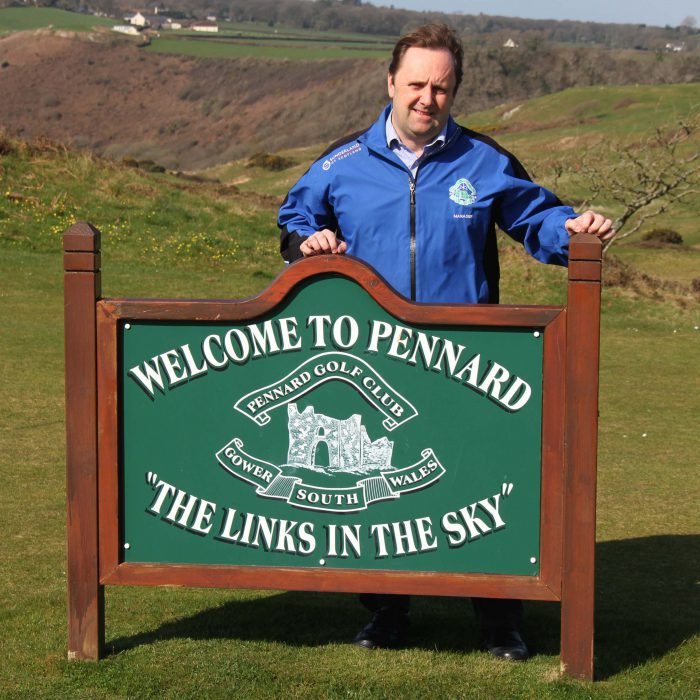
How did you end up in this dual role at Pennard GC?
I started at Pencoed College studying horticulture then went to work for my local authority. In 1985 I became head greenkeeper at Fairwood Park Golf Club in Swansea. After five years I moved to Southerndown Golf Club for three years. Then I went to the Wildernesse Club in Sevenoaks for 14 years as course manager.
In 2007 I worked at Ashburnham Golf Club – it was here that I first started the dual role, and I remained there for seven years. Due to the recession I decided to leave Ashburnham to work as a technical sales representative for Avoncrop Amenity until the unique opportunity at Pennard arose.
I have an HNC in golf course management, I’m a master greenkeeper and have City & Guilds / NVQ 1 to 3 along with many other educational qualifications.
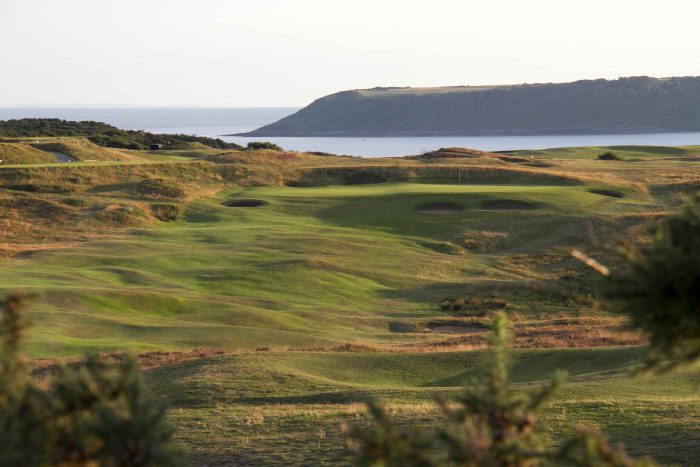
How do you allocate your time between the two roles?
I am in charge of the whole club. Bar, catering, finance, pro and course. It is a challenging, enjoyable and frustrating job. I oversee the course and only venture out to help in large construction jobs like green extensions, tee building and so on.
The arrangement works for Pennard and my time in the club is 70 per cent club 30 per cent course at present.
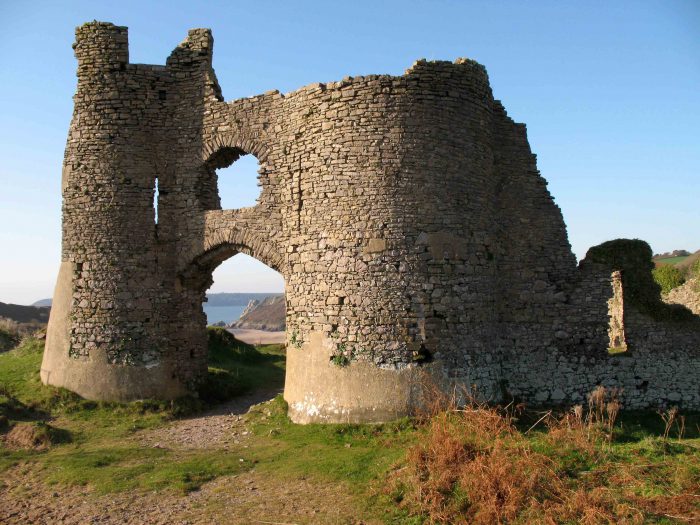
The club is set on the Gower Peninsula, 200 feet above sea level, what are the main challenges the course faces?
The course dries out very quickly and has no irrigation on fairways, which can cause problems.
Pennard has recently been maintained in an extremely sustainable way with little or no nutrient applied to greens, tees and fairways.
Membership was falling and I was tasked to reverse the trend by improving the turf quality.
We applied nutrient to all weak grass areas to aid recovery and improve surfaces. Also we changed the grass seed mixture from pure fescue, which wasn’t surviving. We selected BAR MEDAL due to the fine leaf ryegrass included. The germination year round and hard wearing nature of the mix is vital to us. The divot recovery has been superb with the course transforming from divot infested to almost clean despite heavy year-round play.
The leaf is so fine on the ryegrass that it is hard to tell apart from the fescue in the mix. We get germination almost year-round. Due to the improvements in the fairways this year we are changing to BAR PLATINUM which has more fescue and less rye in the mix.
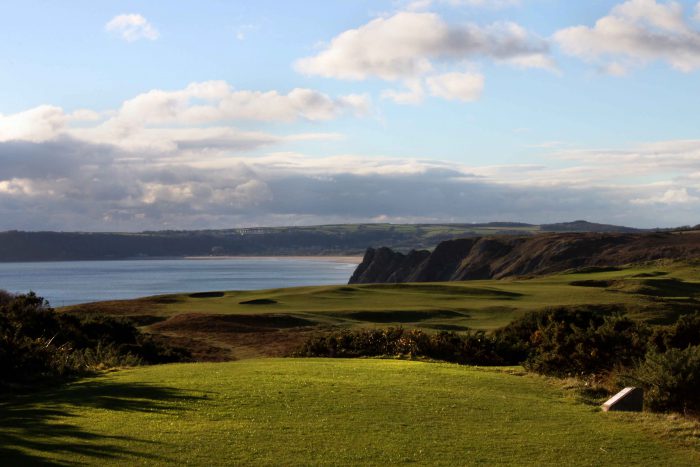
Cattle graze the links from May to September. Does this present any interesting challenges?
The cattle are a total pain but something we currently have to live with. We have a single strand of electrified wire around each green to limit the cattle damaging a green.
What is your bunker refurbishment programme?
We have turf revetted bunkers and no turf supply to repair. We tried purchasing quality turf from Cumbria for bunkers but this was expensive. I met with Richard Allen of Ecobunker and we put a plan to the members which was accepted.
We are now two years into a three year programme of refurbishment. All bunkers will have sustainable AstroTurf revetted faces.
The members love them and we have no complaints about bunker consistency anymore.
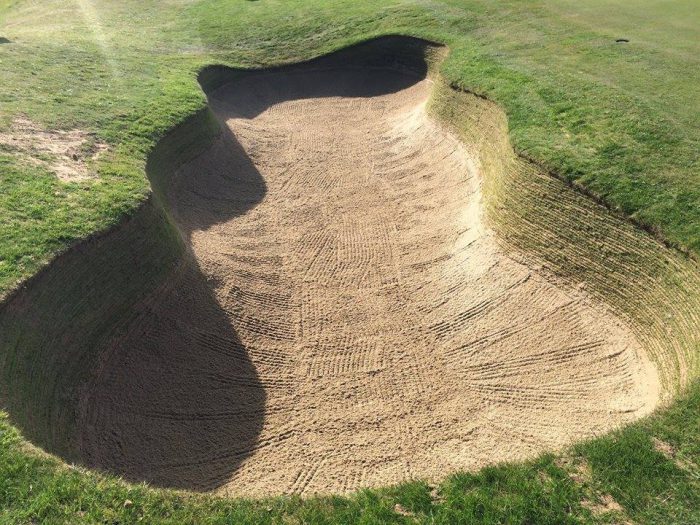
You’ve also been trialling converting your walkways over to ryegrass on rubber mats. What cultivar have you been using?
The rubber matting is necessary on high wear walkways. We either turf underneath with dwarf ryegrass turf or seed with dwarf ryegrass.
We have seen excellent results and it looks better than stone paths.
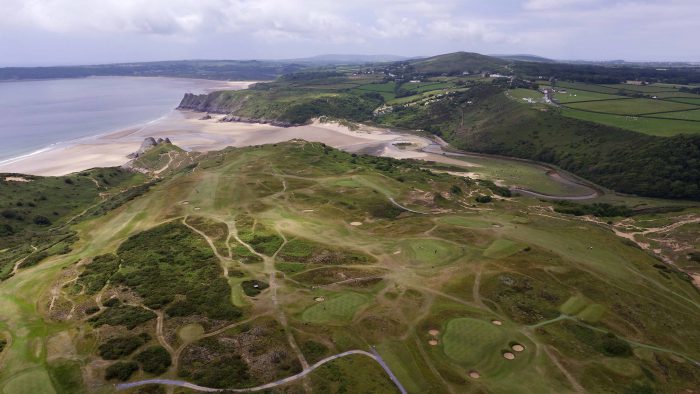
What do you think are the qualities now needed to meet the requirements and demands of players by a course manager?
The job has changed massively since I started my career. It is a business now and we must look after customers otherwise they may go elsewhere.
Flexibility in attitude to work timings, dress code and rules are all important for a happy golf club, even if it sometimes goes against your principles.
Without the customers there will not be a golf club.
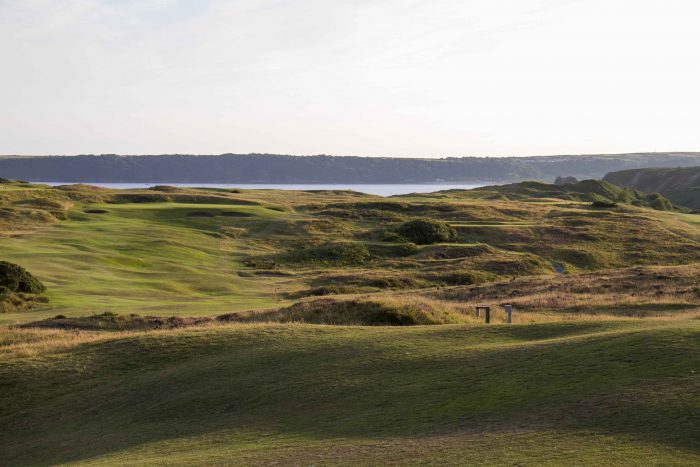
What gives you the greatest satisfaction from your job?
The change in atmosphere at the club is very satisfying. Members are happy and our executive committee meet every two months now which is a sign that they are happy with the way the club is running.
The course improvements have been the easier bit for me with my experience. Learning the office skills, especially finance, has been the challenge. That is why at the ripe old age of 50 I am studying a national diploma, distance learning over two years.















I know from being involved with Huw as a supplier to the admin dept that he is very much on top of his job. And as a golfer of long experience he has the course in excellent condition.